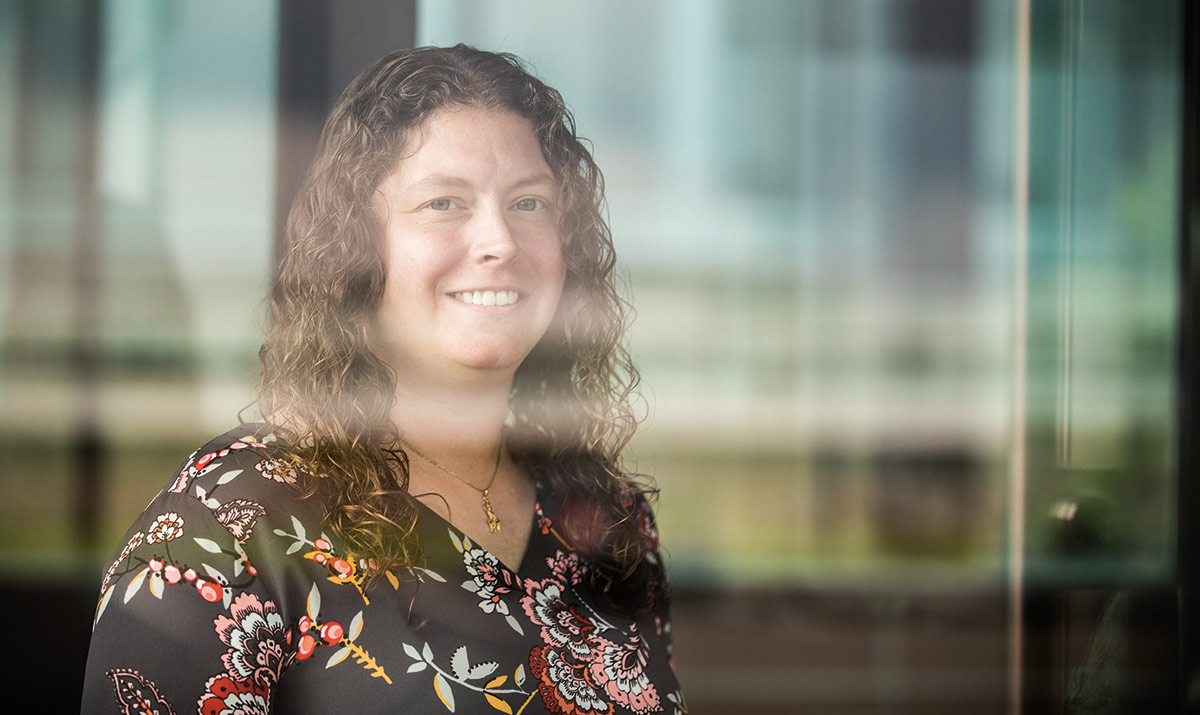
Funding for academic research is typically project based. If a researcher needs to pivot for whatever reason—say, they realize their initial direction isn’t working, but they’ve discovered another promising angle that could yield interesting results—they have to get permission from their funding source to change course or apply for a new grant. Ultimately, they’re left with less time to work in the lab, assist their students, and write papers, which in turn, slows the science.
Lehigh University professor Kelly Schultz won’t have that problem—at least for the next five years.
In August 2022, Schultz, an associate professor of chemical and biomolecular engineering, was granted a $1.87 million Maximizing Investigators’ Research Award, or MIRA, from the National Institutes of Health’s National Institute for General Medical Sciences (NIGMS). The five-year award was developed in 2015 to give investigators greater stability and flexibility to increase their efficiency and potential for scientific breakthroughs. In short, rather than funding projects, the award supports labs.
“It’s a stable funding mechanism,” says Schultz. “You can essentially work on anything your lab does.”
For Schultz, that means a variety of projects. One of her main focus areas is researching how stem cells interact with synthetic materials. The ultimate goal is to create implantable materials that can deliver stem cells to restart or enhance tissue regeneration, particularly for wound healing.
“These materials are designed to be degraded and remodeled by the stem cells,” she says. “So when the cells do that, they create all of these new signals that they then react to in their microenvironment. But we have no idea what the cells are reacting to in that environment.”
Her lab seeks to characterize exactly what’s happening around the cell, and how that changes how the cell interacts with the material. So, for instance, what kind of chemicals do the cells secrete? How do they pull on the material? How quickly do they move?
“Once you know the environments that the cells create to migrate,” she says, “you can start designing those environments into the material to manipulate the cells and get them to leave the material and get to the wounded tissue faster.”
Since receiving the MIRA, Schultz and her team have made significant progress: They’ve completed initial characterization of a new material and begun work on a paper for one of the proposed projects. Late last year, she hired two more students with this funding. “We’ve been able to make a big push in this particular area of research.”
The award supports work on not only characterization of cell-material interactions but numerous other projects, including studying materials that mimic the reorganization of tissues and how adhesion changes the motility of cells. She will also be able to continue and combine work on stiffness and chemical gradients that was funded by the NSF and NIH—funding that finishes out this year.
“A wound will secrete different chemicals to essentially tell other cells to come and help,” she says. “And there’s a gradient there, where the chemical is more concentrated where it is being secreted. The stem cells will react to that and migrate toward higher concentrations of that chemical. So with the next phase of this work, we’ll be combining stiffness gradients with chemical gradients, and looking at ways we can use them together to control the cells.”
As a MIRA recipient, Schultz is required to spend 51 percent of her time on research supported by the award, though she can still apply for grants from other funding agencies and from other institutes within the NIH.
Another upside to the MIRA is that it can be renewed. “As long as we’re being productive, and working toward goals within the mission of NIGMS, we can apply for renewal.”
Ultimately, grants like MIRA benefit early-career researchers. Schultz is able to fully support her PhD students with this single award and supplement the resources Lehigh provides to send students to conferences to present their work. The time Schultz used to spend on writing grant proposals can now be spent writing papers and guiding the next generation of investigators.
“I can help my students get to where they need to be,” she says, “so that we can all be more effective with the research we do.”
Research reported in this publication was supported by the National Institute Of General Medical Sciences of the National Institutes of Health under Award Number R35GM147043. The content is solely the responsibility of the authors and does not necessarily represent the official views of the National Institutes of Health.
